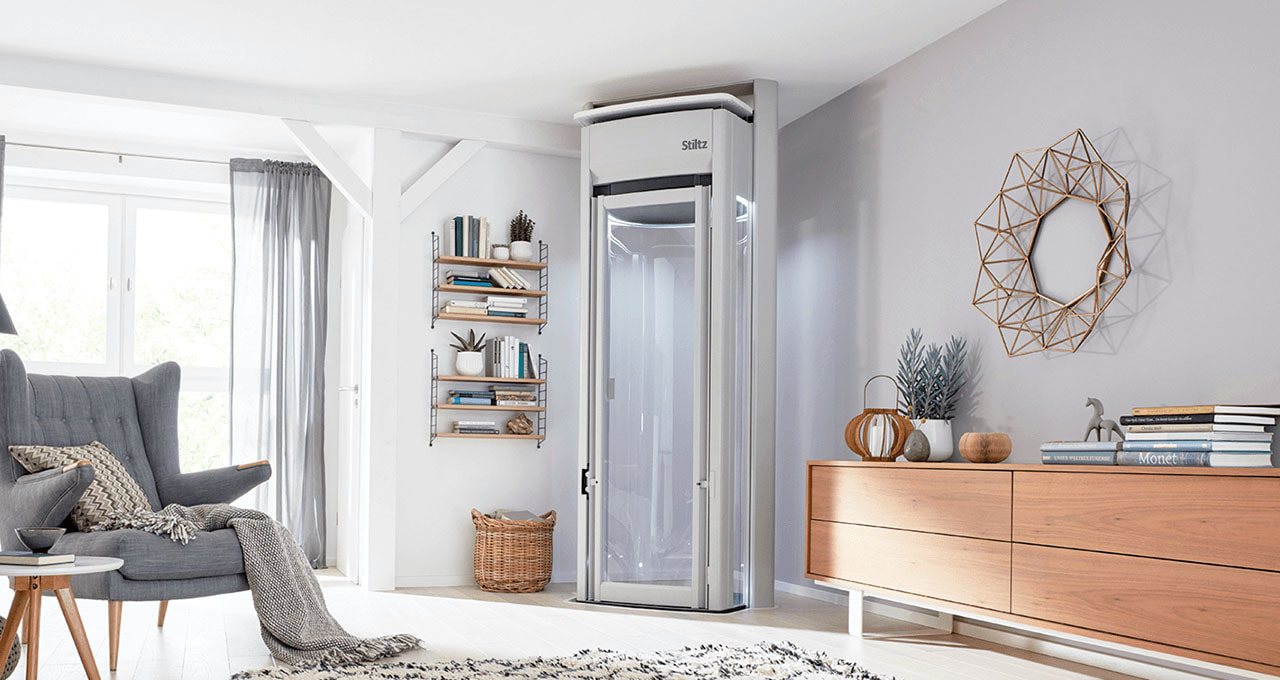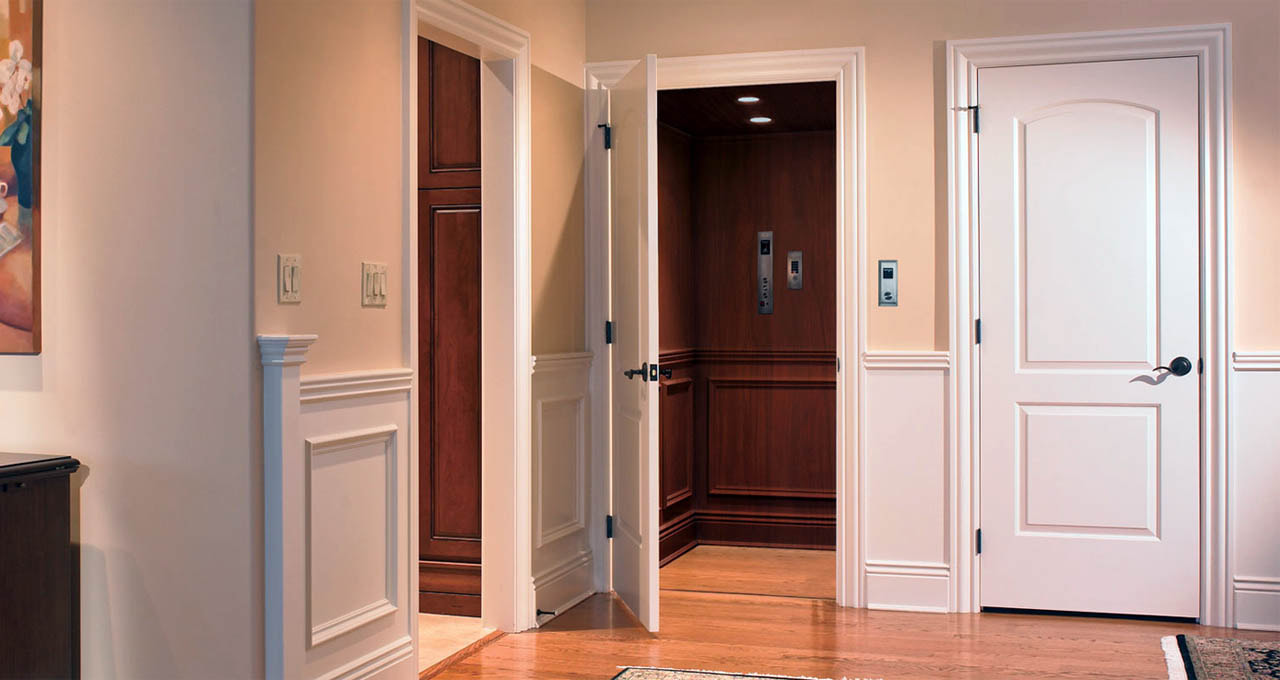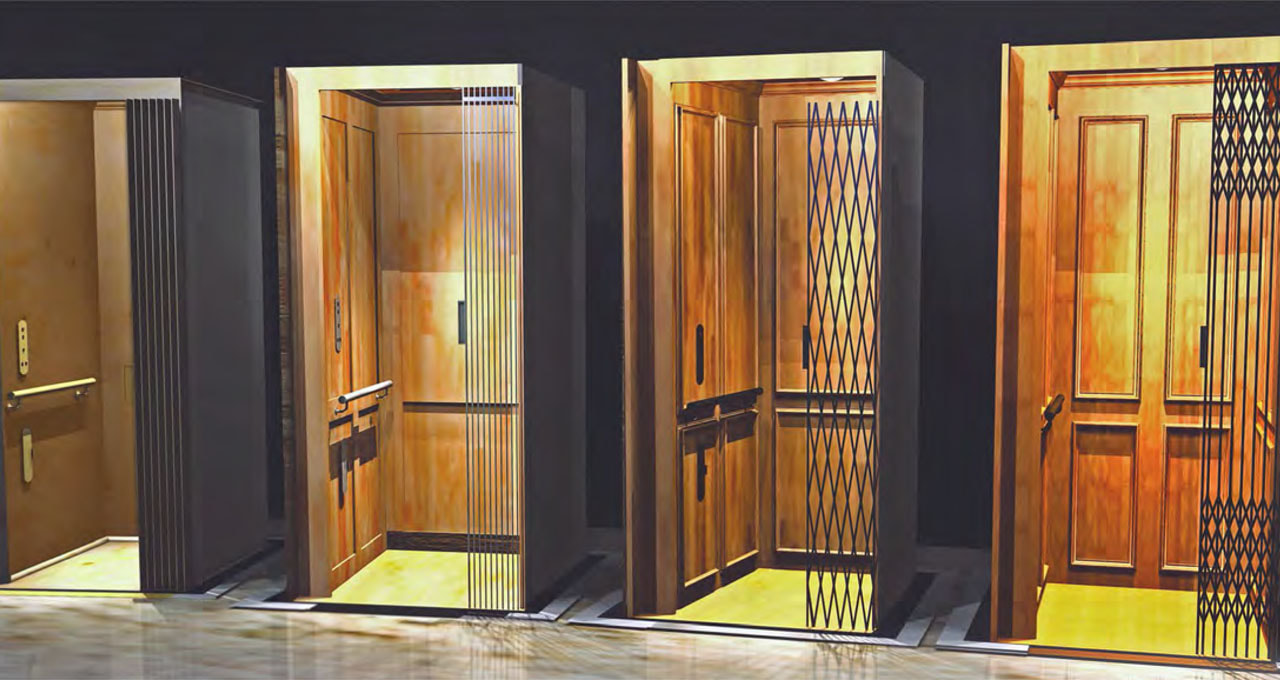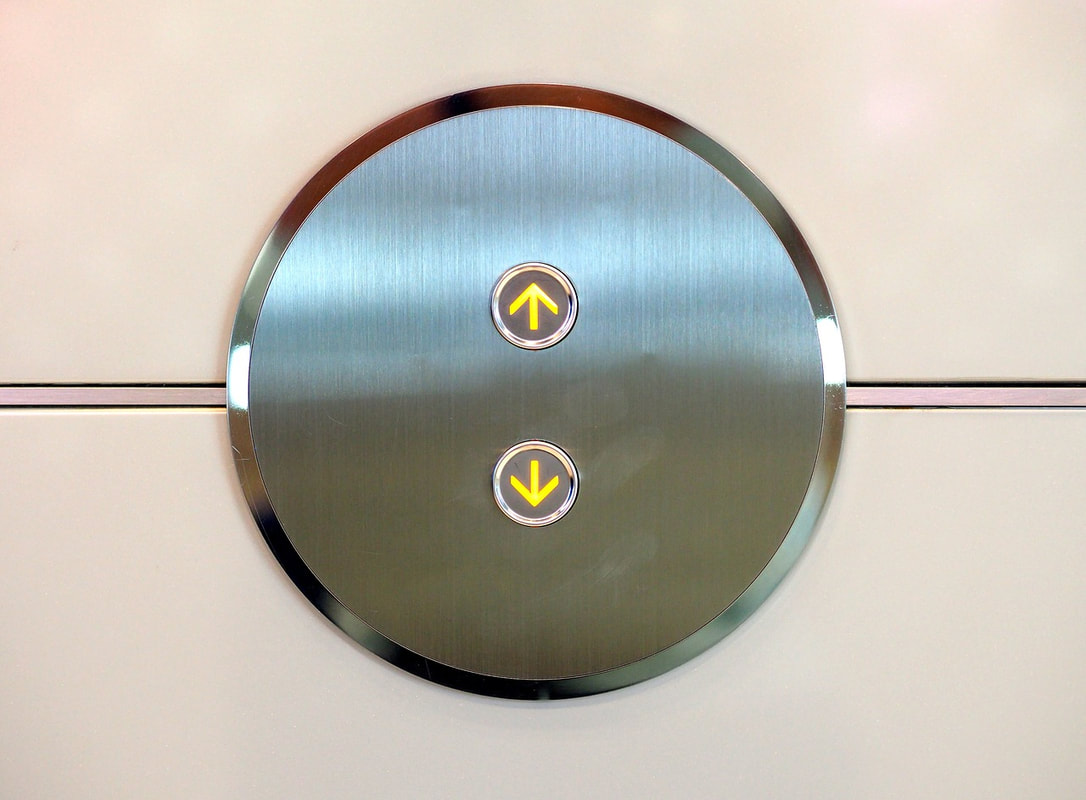|
By Anna Hazard
Introduction - Elevators vs Other Lifts
When it comes to modifying a home to properly age-in-place, residential elevators are the most accessible and easiest lift style to navigate, but come at a premium price in cost and installation time. Unlike with normal and far less expensive chair lifts, bulky mobility aids such as wheelchairs, scooters, and walkers can be taken along from level to level when using an elevator which also makes them a good option for those who expect to be moving furniture or simply carrying packages and other items between multiple storys.
In particular, elevators may also be required for use on inclines that exceed 14 feet or otherwise hit the safety threshold for chair lifts. As compared to other accessibility options, residential elevators tend to be the most expensive choice with one-time installation costs that tend to exceed $30,000+ (with the average typically being between $25,000 - $125,000 depending upon the exact style of elevator being installed). However, considering that assisted living can cost between $25,000 - $50,000 a year depending upon location, if the inability to climb stairs with mobility aids is the main sticking point for remaining in one's current house, then installing a residential elevator may prove to be the less costly option that can pay itself off within 1 - 2 years as compared to moving to an assisted living facility. In addition, home elevators add to the value of one's home (especially if they have been built to complement the existing decor & space function) and thus can be considered a future investment. The cost of a residential elevator will depend upon many different factors including the style of elevator being installed (including the drive or engine that is powering it, whether it's cable, chain, or hydraulic operated, if it requires the further installation of a machine room or closet, and any additional extra features such as power doors etc), the size and square footage of the elevator cabin & its weight capacity, the number of floors being serviced by the elevator, as well as the current configuration of the home and if room for a proper elevator shaft is already present within the household. Other drawbacks for installing a residential elevator over a chair lift or vertical platform lift would include an extended installation time (which can take up to several weeks instead of the matter of hours or days for a normal lift) as well as the tighter tolerance & requirement of an elevator being installed by a licensed professional with all the required permits and inspections. 
Stiltz Alta Shaftless Elevator available at Innovative Lifts.
Shaftless vs Shafted
While shaftless elevators (usually installed along load-bearing walls but sometimes available as standalone) tend to be the least expensive option, they are limited to moving in-between two floors only and the most common & inexpensive variety has narrow cabins that are not suitable for wheelchair users with assistants. Even wheelchair accessible shaftless elevators are compact with small footprints which allow them to be installed in tight quarters, but which is turn will limit the size & style of mobility aid that can be taken on them.
In comparison, normal shafted residential elevators can access floor levels with a maximum vertical rise of around 55 feet and up to six different stops along different levels. The least expensive option for installing this type of elevator would be during the initial building of the home as retrofitting an elevator into an already existing structure that was not meant to contain one inevitably brings in complications that will increase installation costs. Otherwise, multi-story homes may provide an area for a pre-formed shaft if its levels contain "stacked closets" (the closet area of each floor being in the same position throughout the home), which can be converted into an elevator shaft for future use. If there is no room within the household for an elevator shaft, then an addition to the home may need to be built which will house the shaft along the exterior of the building (and which will greatly increase installation costs). 
Inclinator Residential Elevator available in cable drum & hydraulic options at Inclinator.com
Options & Features
Other options & features to keep in mind include making certain that the residential elevator has a battery back-up that can be re-charged for operation during power outages & emergencies. In cases where both the normal power and battery fails, some elevators can have a hand crank (usually situated in the attic or highest attachment point of the elevator) which allows the cabin to be lowered safely. Like with the chair lifts, the elevator should also have auto-stop sensors if something blocks its path (or if something is preventing its doors from closing properly). It should also have easy to use controls situated no higher than 48" up from its floor so that they can be comfortably reached by those in wheelchairs or scooters.
In addition, the elevator threshold should be flush with the floor (or at least with a bump no higher than a quarter of an inch) in order to prevent tripping or problems with wheels rolling properly over the bumper. The elevator floor itself should have a non-slip flooring, preferably with interior grab bars in case of tripping or imbalance during the elevator's movement. 
Symmetry Elevators available with inline gear, hydraulic, and winding drum drives.
Shafted Residential Elevator Types
The various types of shafted elevators that are commonly installed within households typically fall within the following categories.
The Pneumatic Vacuum Drive Elevator has a tube shaped cab within a tube-shaped shaft which uses atmospheric pressure in the pneumatic hoistway to power itself without the need for a machine room, cables, chains, pistons, or counterweights. While it costs less to install than elevators that require machine rooms or closets and is lower cost energy-wise to continue to use (due to power only being needed when lifting the cab), it's still considered a more expensive and higher end installation compared to a overhead winding drum, counter-weight, or in-line gear lift. Pneumatic lifts with transparent hoistways and cabins have an eye-catching appearance that provides a clear view during transport. This type of elevator are known for smooth and quiet rides, but also have smaller general holding capacities than other types of lifts. The Hydraulic Drive Elevator will normally require a nearby machine room or closet to be installed (usually within the foundation or basement), although depending upon the style of elevator and structure of the home, the machinery can be run through pre-existing walls instead. This type of lift uses hydraulic pistons to move tension from the motor through the cables. The elevator can be lowered by hand during emergencies and generally has a smooth and quiet ride compared to other lift styles. However, due to the type of equipment that needs to be installed and maintained, it's costlier than other options such as the winding drum or counterweight elevators. The Winding Drum Elevator is a more traditional and basic type with support cables that are wrapped around a large spool, drum, or reel. If the drum and motor are housed at the top or bottom of the shaft then a machine room or closet may not need to be installed. This makes the winding drum lift a lower cost alternative that is simpler to install than the pneumatic or hydraulic lift. However, the winding drum elevator tends to be louder with a bumpier ride and as it's exact stopping point can vary depending upon the elevator's current load weight, it can create slightly uneven exit thresholds (and thus pose a tripping hazard when entering or exiting the cabin). Gearless Traction Elevators are more traditionally used for commercial applications such as in hotels & businesses, but can also be used for high-end installations at residences. It uses a combination of counterbalance weights as well as more cables than the winding drum lift, so while it is costlier to install and maintain, it has a much smoother and quieter operation. The Counter-weighted Chain-Drive Elevator uses chains to transfer power from its motor to the gears needed for movement and has counterbalanced weights to offset the need for a more powerful motor. It is one of the least expensive varieties of a normal shafted elevator that can be installed due to not needing a machine room or closet for operation as well as being efficient and low maintenance (as chains need less monitoring and replacement compared to normal elevator cables). Similar to the winding drum elevator, this style of lift has a bumpier and noisier ride than other options and it's stopping point can vary depending upon its current load, thus causing an uneven exit threshold and posing the possibility of a tripping hazard. In-line Gear Elevators are similar to chain drive lifts except they have their motor assemblies at the top of the elevator shaft instead of the top of the cab which lowers the installation cost, is more energy efficient, and provides better access to outside safety controls. This style of elevator otherwise shares the same benefits and bonuses as the normal counter-weight chain drive. View the Rest of the Series
Part 1 - Introduction
Part 2 - Exterior Part 3 - Landscaping & Gardens Part 4 - Patio, Porch, & Deck Part 5 - Garage & Carports Part 6 - Entrances, Exits, & Thresholds Part 7 - Exterior Steps & Ramps Part 8 - Threshold Lighting & Windows Part 9 - Interior Doors & Halls Part 10 - Interior Steps & Staircases Part 11 - Interior Stairlifts Part 12 - Interior Elevators Part 13 - Living Room Part 14 - Kitchen
4 Comments
4/2/2021 02:58:00 pm
I love the idea of having an elevator that has a backup battery in case of a power outage. The last thing you want is for someone to be stuck on it when the power goes out. The backup battery could help prevent those problems from ever happening.
Reply
4/2/2021 02:58:24 pm
It's cool that you mention that a residential lift can improve your home's resale value. I want to sell my house next year, so I'm thinking about having a residential lift installed in it first. I'm going to look for a good business in the area that can install a residential lift for me.
Reply
2/10/2022 06:48:26 am
Thank you for sharing this information. explained about Home Elevators are very well informed. We can learn so much through these article . <a href="https://www.snehaelev8r.com/">Best Elevator Company in Hyderabad</a>
Reply
1/18/2023 03:48:32 pm
My uncle is getting surgery in a couple of months, and his mobility will be reduced, so he wants to accommodate his house to match his new lifestyle. It really helped when you described residential elevator types and their different features, and I'm positive that my uncle will be glad to read this too. Thank you for the information on selecting a residential elevator that doesn't make too much noise.
Reply
Leave a Reply. |
AboutNews updates, tips, and guides on senior care, senior health, stress relief and a host of other caregiving related topics from the professionals at Ella Stewart Care. |



 RSS Feed
RSS Feed
